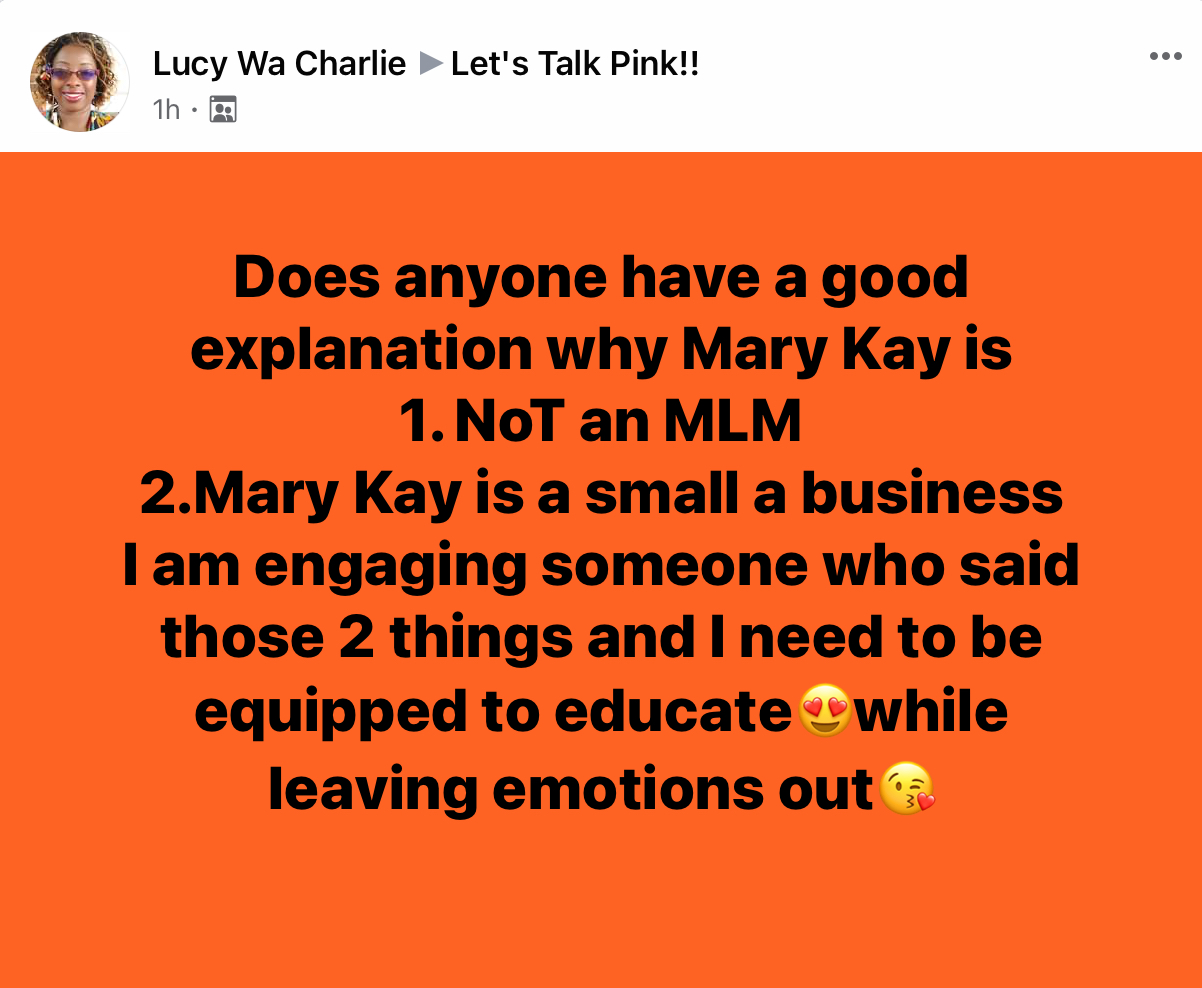The Non-Retail “Direct Selling” Company
Written by Robert FitzPatrick
As market-based economies become the prevailing global model, millions of people are being exposed to sales promotions, income opportunity solicitations, and investment schemes with which they have no experience or knowledge. Vulnerability to deception and the need for consumer education correspondingly reach global heights.
One especially dangerous deception is now luring millions of people in Asia into financial losses. Referred to here as the “non-retail direct selling company”, this type of scheme originated in the United States in the late 1970s and is now being exported around the world. Each year, it causes billions in financial losses and is seeking to entrench itself as an accepted form of business. It combines the purchase of costly products with the false attraction of earning an income as a self-employed person in “network marketing” or “multi-level marketing” businesses.
For many people owning a profitable and independent business represents the dream of economic freedom and financial opportunity. However, this dream becomes a nightmare when a consumer is misled into a non-retail direct selling business. The non-retail model results in loss rates of more than 99% for all that sign up as “independent distributors” or sales agents.
These losses in the non-retail schemes have nothing to do with competition, ambition, sales skills or any other normal market factor. Losing money in such a scheme is not failure, and making money is not success. These are not true businesses at all because there is no fair exchange of value. Rather, they are elaborate pyramid schemes in which the profits to a few come directly from the massive losses of many. Failure is therefore predetermined for nearly all. Those who “succeed” do so on the basis of deception, not entrepreneurship.
Pyramid Scheme Alert, an international consumer education group, has had extensive experience with this particular type of scheme. The group has researched the pay plans, business structures, distribution of payments, and costs of participating in the schemes. Some research was gained from serving as expert witnesses in court cases against them.
Like all consumer frauds, the non-retail scheme attaches itself, parasite-like, to a legitimate direct selling, a form of business that consumers know and trust. Many governments have not yet learned how to distinguish these non-retailing frauds from legitimate direct selling businesses.
The non-retail direct selling scheme promotes a “home-based business opportunity” in which an individual consumer signs up to become a sales representative, distributor or marketing agent for the company. In this way, the scheme appears superficially to be a traditional direct selling business in which individuals retail products they have purchased from a supplier company at a wholesale price. The difference between the wholesale price at which they are purchased and the retail price at which they are sold to consumers constitutes the profit to the sales representative.
Yet in these schemes, very little of the products are actually sold to anyone other than the sales people, and virtually none of the salespeople earns a net profit from retailing products to consumers. The typical company of this type will claim it is a direct selling business and will often highlight “retail” sales. However, the average number of retail customers per sales representative is far too small to support a retail business. The retail selling is therefore only part of the camouflage. This business is not based on “direct selling” but on recruiting other sales representatives in a pyramid fashion.
The sales organization of the non-retail direct selling company is structured in a complex multi-level hierarchy. Each new recruit to the business is linked to those above in an “endless chain” with the upper levels receiving commissions from the company based on the volume of purchases made by all the recruits below. This multi-level structure does not facilitate retail sales or sales management. Rather the design serves to create a wider and deeper base of sales representatives on whose purchases those at the top will gain commissions and rebates. The commissions to the higher levels are based not only on the purchases of more people but also increase in rate per sale for each higher level. As one moves up, he or she makes money on more people and earns more per sale on all below as well. In short, the design enriches the top recruiters at the expense of all others.
Why Retailing Does not Occur
Several key factors – in combination – make retailing unfeasible and unprofitable and reveal the company to be a pyramid recruitment scheme, not a direct selling business as its claims to be.
- The products are high priced and non-competitive.
- The products are undifferentiated. Similar or even identical products are available for purchase from other companies, in stores or over the Internet.
- Choice is restricted in the direct “person-to-person” method of selling and more people prefer to purchase goods of this type in stores where there is wider choice and no pressure upon personal relationship.
- The profit margin (difference between wholesales and retail) is inadequate for covering sales costs and achieving a net profit. Discounts and free samples are often required and all other sales and marketing expenses are borne directly by the individual sales person. At least a 50% gross profit, which equates a 100% markup (Purchase for $50 and sell for $100) must be viewed as a bare minimum for retail selling and in many cases is still inadequate. As the net profit shrinks the requirement to increase volume grows. Yet the time required to increase the volume makes the selling effort unprofitable and unfeasible. It is simply not worth the effort. Recruiting other sales reps replaces the effort to sell directly.
- The competition for selling the product is too high for profitable retail selling. The non-retail direct selling scheme allows – and strongly encourages – the authorization of unlimited numbers of sales representatives. Each salesperson is instructed to enroll close friends, neighbors and family members also as salespersons. In this manner, retail sales to these people are no longer possible since they now can purchases the goods at wholesale prices. As saturation of authorized sales people occurs in a community, cost-effective retail selling becomes nearly impossible.
- The company offers little training or support for retail selling. The focus and priority are placed on training, motivating and rewarding the recruitment of more and more sales people.
- The compensation plan richly rewards the recruiter over the retailer, luring the new sales representatives immediately into recruitment efforts and away from retailing, even if they have not already determined that retailing is unprofitable. The non-retail schemes pay more to upper levels of hierarchy – who have nothing to do with the sales – than they do to the person at the bottom who actually makes the sale. Not only do those higher up the chain receive more pay – per sale – than the ones making the sales but also they do not have to incur any sales costs. Their profit per sale is therefore many times greater. The result of this pay plan is to discourage retail selling.
- Whatever opportunity exists in the scheme for profitability is based on being positioned high on the chain. Recruiting is the only way to advance to the higher levels where the leveraged high incomes can be gained.
The percentages of commission, the purchase requirements for rising to each new level, and other rules associated with the system are complex and unfamiliar to the new recruit. Few recruits engage in due diligence or ask for actual income or expense information. The scheme is not required by law and does not divulge the actual financial records of success or failure of those who have invested in the past.
Misleading Promises
Instead, the non-retail direct selling schemes present a compelling and very alluring picture to potential recruits that diverts attention from the flawed structure and its disastrous outcome. Virtually all companies of this type in every country they operate in make the same alluring and misleading promises to recruits:
- Opportunity to earn “residual” income, that is, ongoing commissions on the purchase by others whom you recruited or whom they in turn recruit. This expands earning power well beyond ones own personal efforts. You can be freed from “wage slavery.”
- Continuous income without continuous work. Most products are “consumable” goods that people might re-use month after month. The most common commodities in these schemes vitamins, food supplements, skin care products, long distance phone service and household cleaning products are the most prevalent.
- Extraordinarily high-income potential, much higher than most salaries or professions would normally promise. This is claim is based on the theoretical potential of expanded recruitment efforts of others. A typical presentation shows the potential of one distributor recruiting just five other people that each recruit five and this continues just seven “generations.” The result is over 78,000 sales representatives. Commissions on all of their purchases, the promotions claim, will go to that one sales person at the top, month after month. That person could be you. Does your current job offer that kind of income opportunity?
- Possibility of early retirement provided by a continuous, residual income stream from the labors of others in your sales organization. No need to work and save all your life.
- Personal freedom, financial independence as a self-employed person. No more bosses.
- Time flexibility to set your own work hours. More time with the children, to take vacations, and to do more in life.
- Security provided by self-sufficiency against the many changeable and unpredictable factors in today’s economy, including corporate downsizing, government cutbacks, inflation, corporate profit taking, increasing requirements for high tech competency in the job market and job discrimination against older workers. You are protected from all that.
- Opportunity to enter the business for a low initial investment of money. No risk.
- No need to develop highly specialized skills or obtain higher education in order to succeed. Anybody can do it. You already have what it takes.
- No marketing expenses or “cold calls” to strangers are required because your friends and associates are your first prospects. Your first recruit is as close as your next door neighbor or your own mother in the next room.
Pyramid Math
Sadly, none of these promises is fulfilled. The endless chain structure of the business must inevitably doom the vast majority – as many as 99% – to financial losses. This is because more than 90% will always be in the bottom ranks where there are not enough recruits below to provide an income. This can be illustrated in a simple 6-level chain in which each person recruits just 5 people. At least three levels of recruits (5 + 25 +125 = 155) are needed for each participant to begin to achieve a profit.
Illustration:
Top – 1
Level #1. – 5
Level #2. – 25
Level #3. – 125
Level #4. – 625
Level #5. – 3,125
3,906 participants total
Since only those with three levels below them are profitable, only the Top person and the individuals in levels #1 and #2 qualify. Each of the people in next three levels below does not have enough “downline” to generate a profit. This means that only 31 out of 3,906, or less than one percentage in the six-level chain, have as many as three levels below them and are profitable. More than 99% are unprofitable based on their position.
This basic formula holds true no matter how much further the chain extends. Approximately 99% are at the bottom of the chain where profit is not possible.
For example, if the scheme recruited one more level, Level #6, another 15,625 participants would join. The total would now be 19,531. The number in profitable positions, Top, and the individuals in Levels #1, #2, and #3, would grow to 156 and this number would still equate to less than 1% of enlarged organization.
The big numbers which are cited by the scheme’s promoter as the “income potential” are at the deepest level of the “downline.” Only a tiny few can ever recruit to this level. This is mathematically predetermined from the start by the MLM pay plan.
The trick of the scheme is to cover up this reality and to convince each and every enrollee that he/she can succeed by building this large and deep downline. Recruits are told that the program is a formula for wealth for all.
The bottom levels could, theoretically, recoup their money by finding new distributors under them, but that would work only if the scheme could go on forever and there were an infinite number of people.
Of course, the schemes do not go on forever. Nor do they continue until they exhaust all possible new recruits. While the scheme is structured as an endless chain, and makes promises to new recruits as if it were “endless” and could fulfill its promises of success to all, in practice, the chain keeps breaking at the bottom and being “repaired.”
The way the mathematical limitation works itself out is in the pattern of dropouts. Non-retailing pyramid schemes don’t fully or quickly saturate areas with members because most people quit within a year. All such schemes experience a 50-90% annual dropout rate.
Dropouts thwart the recruitment process at the lower levels. The people trying to build the downline are always dependent on others below to “duplicate” the process. When their new recruits become discouraged and drop out, the rebuilding process must start yet again. And while the hopefuls engage in this constant rebuilding effort, they are also continuously paying money to the scheme and its organizers for products and training as well as incurring other business expenses. Eventually, they drop out too.
Since almost no one in the chain is retailing the product, they can only recoup their investments in products and training and other costs by recruiting other sales representatives, but the endless chain structure dooms most to lose in that system.
With its ongoing operation, continuous enrollment of excited new recruits and public displays of wealth and success by the organizers, the organization appears to the uninformed as viable, stable, and successful. Most schemes can go on for many years by successfully recruiting new people to refill the bottom ranks, which become open as past recruits quit the business in “failure.” Such is the elusive and tricky nature of the scheme.
Blaming the “Failures”
Many of those who quit are so convinced that they personally “failed” – they are told by the organizers that everyone can succeed, so if they do fail it is only their own fault – that they do not complain about the scheme to the government authorities or even warn friends about not also joining. In this way, the scheme can continue to inflict losses on very large numbers of people without government interference or media exposure.
Yet, when analyzed more closely, the non-retailing schemes are revealed to have almost no true customers, since almost no products are ever retailed to the general public. Virtually the only people buying the goods are the scheme’s own sales representatives and their friends or family. They buy the goods, not on the basis of their value or need for them, but on the basis of false promises of income. Few continue to buy these goods after quitting as sales representatives. Nor does the scheme have a stable or successful sales force. 99% of the sales representatives lose money in the scheme and virtually all inevitably quit in due time.
A business with almost no customers and virtually no profitable sales representatives could not be called a “sales” business and certainly it is not a “direct” selling business. Indeed, cold facts expose it for what it is – a pyramid recruitment scheme that masquerades as a direct selling company. “Sales” are achieved deceptively. The commercial products are part of a disguise and serve to launder the money that is transferred from successive cycles of recruits to the crafty organizers at the top. The true and actual “product” of this type of scheme is a false promise.
© 2004 Robert L. FitzPatrick
Published in 2004 in Marketing MasterMind, a monthly publication of the Institute of Chartered Financial Analysts, a division of ICFAI University, Bangalore, India.





 Visit the
Visit the
Tracy, thanks for printing this article.
Sincerely.